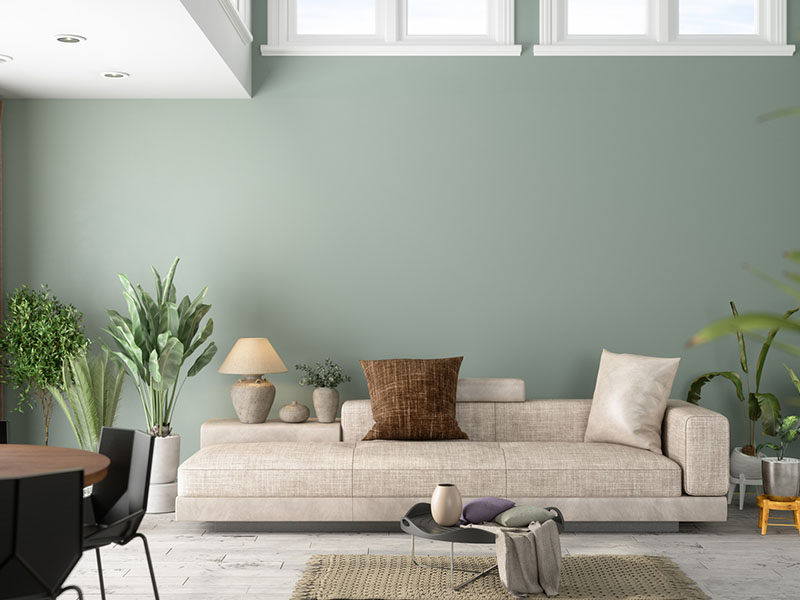Going green: Key features of a sustainable home

WHY GO GREEN?
Here are some of the benefits of having sustainable home features:- Reduced environmental impact. Sustainable homes minimize their carbon footprint by consuming fewer resources and producing less waste, thereby contributing to a healthier planet.
- Healthier living: Eco-friendly homes are built with green materials that do away with harmful chemicals and pollutants which are sometimes found in standard building materials. The result is a more comfortable living environment, protecting your family from the potential toxins.
- Long-term savings. Energy-efficient homes save you money on utility bills over time. What’s more, green homes generally require less maintenance and repairs, saving you even more money in the long run.
KEY FEATURES OF AN ECO-FRIENDLY HOME
Here are some sustainable home features to look for in an eco-friendly home:- Energy efficient features One of the most beneficial aspects of an eco-friendly home is its energy efficiency. Look for homes with:
- Energy star appliances. These appliances are designed to consume less energy and water, which can significantly reduce utility bills.
- High insulation levels. Proper insulation keeps the home warm in winter and cool in summer, reducing the need for heating and cooling.
- Energy-efficient windows. Double or triple-pane windows with low-emissivity (Low-E) coatings help minimize heat loss.
- Sustainable materials
- Recycled or repurposed materials like repurposed wood from an architectural salvage; recycled glass for tiles and countertops; recycled plastic for composite decking, insulation, or siding; and recycled steel for structural beams and framing.
- Low-VOC paints and finishes. Volatile organic compounds (VOCs) can harm indoor air quality. Choosing low-VOC options can create a healthier living space. If the seller has repainted their home, ask if they used a low-VOC option. If not, you can choose to repaint the house after you’ve moved in.
- Sustainable flooring. Bamboo, cork, and reclaimed hardwood are excellent choices for eco-friendly flooring.
- Water efficiency features
- Low-flow fixtures. Faucets, showerheads, and toilets that are designed to use less water can significantly reduce water consumption.
- Rainwater harvesting systems. These systems collect rainwater for irrigation and other non-potable uses, helping to conserve municipal water supplies.
- Renewable energy technologies
- New construction standards in College Station, TX. If you’re buying new construction in College Station, TX, the home’s insulation, windows, HVAC systems, and lighting are now compliant with the International Energy Conservation Code (IECC).
- Renewable energy integration. In Texas, many builders incorporate solar panels for electricity generation, which can significantly reduce reliance on the grid and lower energy bills.
- Passive solar design incorporates elements that maximize natural light and solar gain while minimizing heat loss in winter and heat gain in summer, reducing reliance on artificial heating and cooling.
- Smart home technology
- Smart thermostats that can learn your schedule and adjust heating and cooling accordingly, optimizing energy use.
- Energy monitoring systems that provide real-time data on energy consumption, so you identify ways to reduce energy consumption and lower your bills.
- Smart lighting that turns on when you are around.
TIPS FOR A SUCCESSFUL ECO-FRIENDLY HOME PURCHASE
- Work with a green Realtor. Consider partnering with a real estate agent who specializes in eco-friendly homes. They can provide valuable insights, connect you with sustainable listings, and help you understand the benefits of various green features.
- Assess the location. The sustainability of a home also depends on its location. Look for neighborhoods that promote eco-friendly living through proximity to public transportation, walkability and biker friendliness, and access to amenities.
- Conduct a thorough inspection. Order an inspection before you close on a home. Look for signs of energy inefficiency, such as drafts or outdated systems. An inspector familiar with green building practices can help identify the strengths and weaknesses of the property’s green efficiency.
- Consider future upgrades. Allow a little flexibility. If you find a home that meets most of your criteria but lacks certain eco-friendly features, consider the potential for upgrades. Many energy-efficient improvements can be made after purchase, such as installing solar panels or upgrading appliances.

